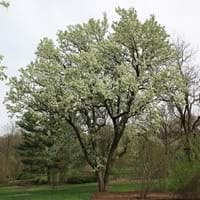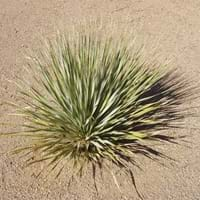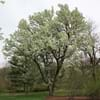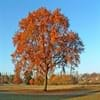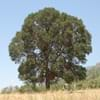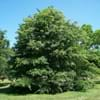Life Span
Perennial
Perennial
Type
Tree
Cactus or Succulent
Origin
Eastern Asia
Southwestern United States, Mexico
Types
Not Available
Not Available
Habitat
fencerows, open Woodlands, Thickets, Woodlands
Desert, Hot climate regions
USDA Hardiness Zone
5-8
12-15
Sunset Zone
2b, 3a, 3b, 4, 5, 6, 7, 8, 9, 14, 15, 16, 17, 18, 19, 20, 21
10, 11, 12, 13, 14, 15, 16, 17, 18, 19, 20, 21, 22, 23, 24
Habit
Pyramidal
Rosette/Stemless
Flower Color
White
Yellow
Flower Color Modifier
Bicolor
Not Available
Fruit Color
Sandy Brown
Tan
Leaf Color in Spring
Dark Green
Green, Blue Green
Leaf Color in Summer
Dark Green
Green, Blue Green
Leaf Color in Fall
Red, Burgundy
Green, Blue Green
Leaf Color in Winter
Not Available
Green, Blue Green
Leaf Shape
Oblovate
Linear
Plant Season
Spring, Summer, Fall
Spring, Summer, Fall, Winter
Sunlight
Full Sun
Full Sun
Type of Soil
Loam, Sand
Loam, Sand
The pH of Soil
Acidic, Neutral, Alkaline
Neutral, Alkaline
Soil Drainage
Average
Well drained
Bloom Time
Early Spring, Spring
Spring
Tolerances
Pollution, Drought, Salt, Soil Compaction
Drought
Where to Plant?
Ground
Ground
How to Plant?
Grafting, Root Division, Stem Cutting
Leaf Cutting, Stem Cutting
Plant Maintenance
Medium
Medium
Watering Requirements
Needs a lot of water initially, Needs watering once a week, occasional watering once established
Allow soil to be completely dry in between waterings, Needs less watering
In Summer
Lots of watering
Lots of watering
In Spring
Moderate
Moderate
In Winter
Average Water
Average Water
Soil pH
Acidic, Neutral, Alkaline
Neutral, Alkaline
Soil Type
Loam, Sand
Loam, Sand
Soil Drainage Capacity
Average
Well drained
Sun Exposure
Full Sun
Full Sun
Pruning
Prune regularly, Remove damaged fruit, Remove damaged leaves, Remove dead branches, Remove dead leaves, Remove dead or diseased plant parts, Remove deadheads, Remove hanging branches
Remove damaged leaves, Remove dead branches, Remove dead leaves
Fertilizers
All-Purpose Liquid Fertilizer, Apply N-P-K
Does not require fertilizer once established
Pests and Diseases
Red blotch
Not Available, Red blotch
Plant Tolerance
Drought, Pollution, Salt, Soil Compaction
Drought, Dry Conditions, Dry soil, Full Sun, Heat Tolerance
Flower Petal Number
Single
Single
Fragrant Bark/Stem
No
Not Available
Foliage Texture
Medium
Bold
Foliage Sheen
Glossy
Matte
Attracts
Birds
Not Available
Allergy
Pollen
Not Available
Aesthetic Uses
Not Used For Aesthetic Purpose
Borders, Decorating walls, Ground Cover
Beauty Benefits
Not Available
Not Available
Environmental Uses
Air purification, Food for birds, Nesting sites for birds, Shadow Tree, Shelter for wildlife, Wildlife
Air purification
Medicinal Uses
Not Available
Not Available
Part of Plant Used
Fruits, Seeds
Not Available
Other Uses
Wood is used for making furniture, Wood is used fore making tools
Not Available
Used As Indoor Plant
No
No
Used As Outdoor Plant
Yes
Yes
Garden Design
Feature Plant, Shade Trees, Street Trees
Container, Dried Flower, Everlasting, Feature Plant, Rock Garden, Wall, Wildflower
Botanical Name
PYRUS calleryana 'Bradford'
DASYLIRION berlandieri
Common Name
Bradford Pear, Callery Pear
Blue Giant,
Blue Twister,
Desert Spoon
In Hindi
ब्रैडफोर्ड नाशपाती के पेड़
Zaragosa
In German
Bradford Birnbaum
Zaragoza
In French
Bradford poirier
Saragosse
In Spanish
peral de Bradford
Zaragoza
In Greek
αχλαδιά Μπράντφορντ
Σαραγόσα
In Portuguese
pereira Bradford
Zaragoza
In Polish
Bradford grusza
Saragossa
In Latin
Bradford piri
Caesaraugusta
Phylum
Magnoliophyta
Chordata
Class
Magnoliopsida
Not Available
Family
Rosaceae
Agavaceae
Clade
Angiosperms, Eudicots, Rosids
Not Available
Tribe
Maleae
Not Available
Subfamily
Maloideae
Colubrinae
Number of Species
Not Available
Not Available
Season and Care of Bradford Pear and Zaragosa
Season and care of Bradford Pear and Zaragosa is important to know. While considering everything about Bradford Pear and Zaragosa Care, growing season is an essential factor. Bradford Pear season is Spring, Summer and Fall and Zaragosa season is Spring, Summer and Fall. The type of soil for Bradford Pear is Loam, Sand and for Zaragosa is Loam, Sand while the PH of soil for Bradford Pear is Acidic, Neutral, Alkaline and for Zaragosa is Neutral, Alkaline.
Bradford Pear and Zaragosa Physical Information
Bradford Pear and Zaragosa physical information is very important for comparison. Bradford Pear height is 1,524.00 cm and width 914.40 cm whereas Zaragosa height is 270.00 cm and width 180.00 cm. The color specification of Bradford Pear and Zaragosa are as follows:
Bradford Pear flower color: White
Bradford Pear leaf color: Dark Green
Zaragosa flower color: Yellow
- Zaragosa leaf color: Green and Blue Green
Care of Bradford Pear and Zaragosa
Care of Bradford Pear and Zaragosa include pruning, fertilizers, watering etc. Bradford Pear pruning is done Prune regularly, Remove damaged fruit, Remove damaged leaves, Remove dead branches, Remove dead leaves, Remove dead or diseased plant parts, Remove deadheads and Remove hanging branches and Zaragosa pruning is done Remove damaged leaves, Remove dead branches and Remove dead leaves. In summer Bradford Pear needs Lots of watering and in winter, it needs Average Water. Whereas, in summer Zaragosa needs Lots of watering and in winter, it needs Average Water.
